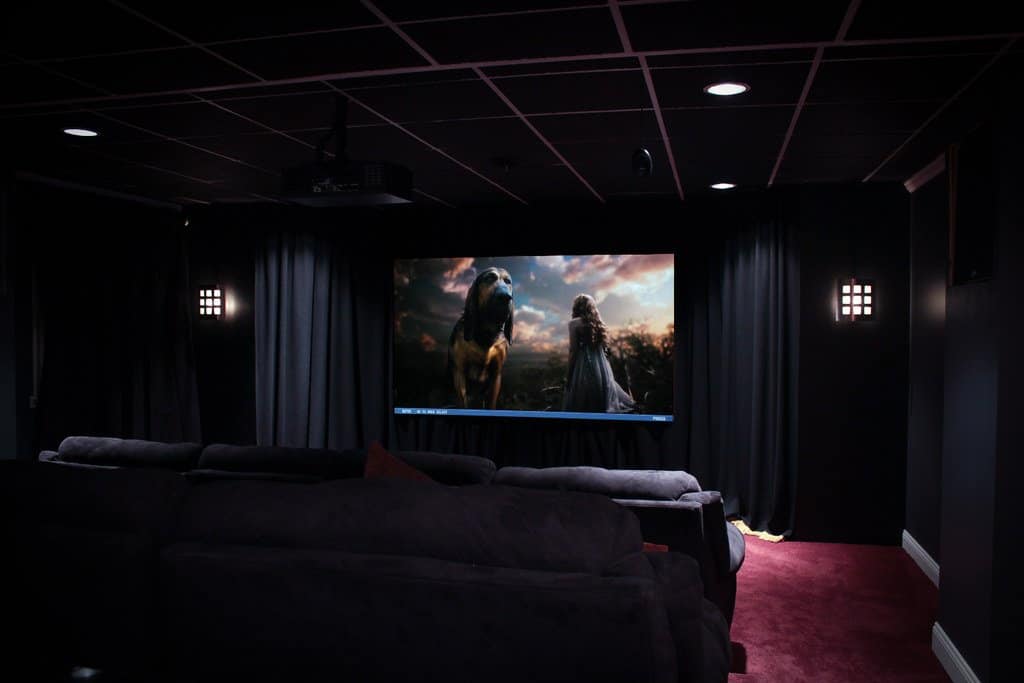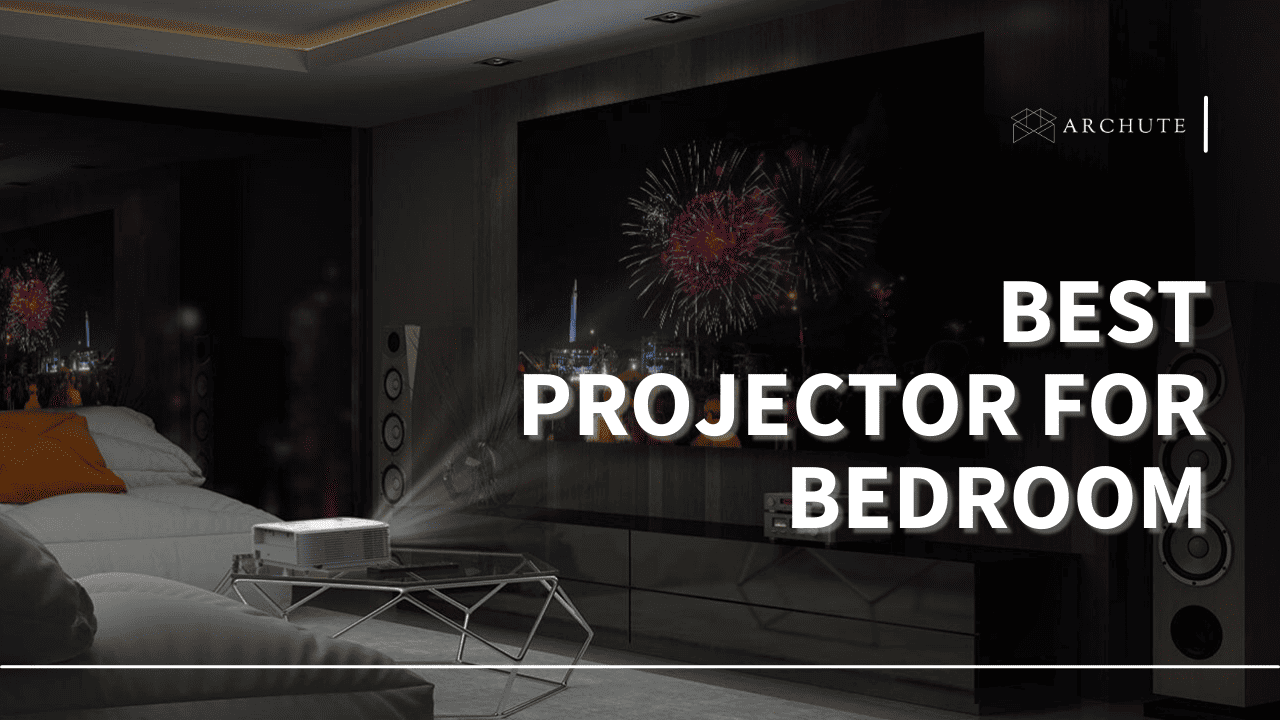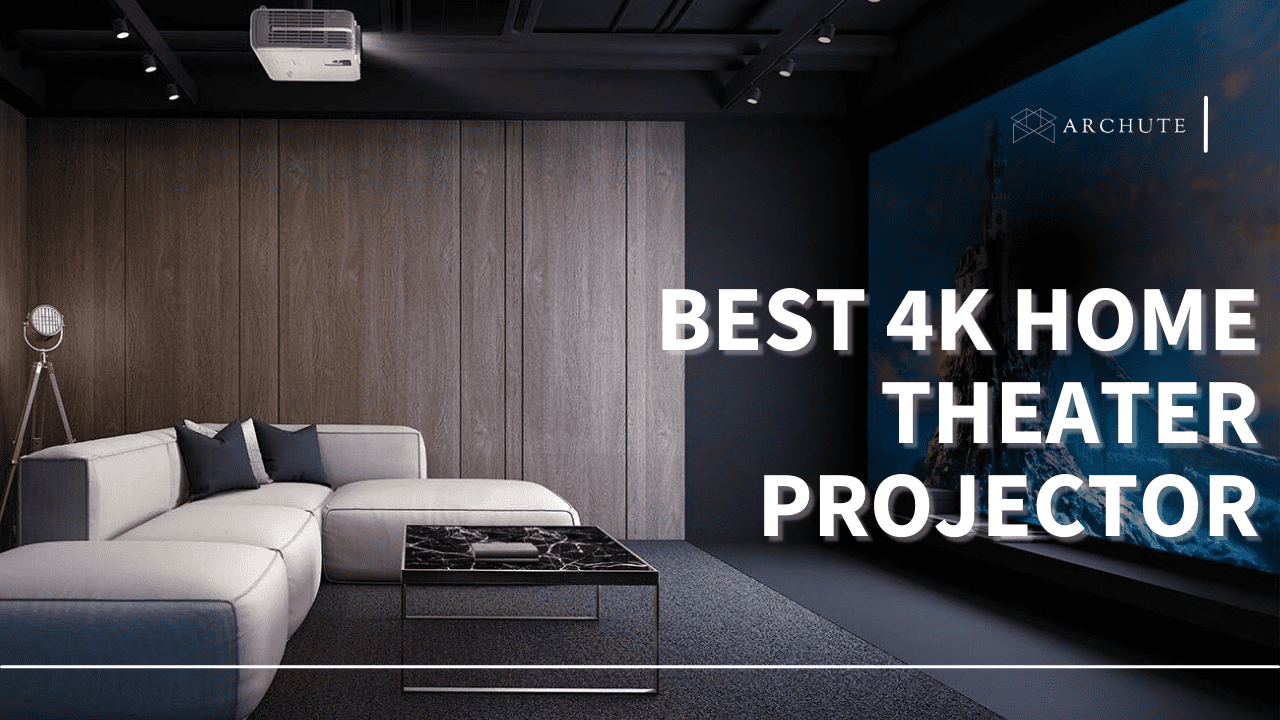It’s remarkable how home theater projectors have advanced just in a couple of years, with today’s models providing even better quality than flagship TVs. Besides, home projectors today have become more affordable for a regular user, and are widely accessible in the home appliances market. We have created this list of home theater projectors, so that you can comfortably transform your living room into a cinema hall.
1. AuKing Projector, 2024 Upgraded Full HD 1080P Home Theater Video Projector
- ★【Superior Home Theater Projector 】2022 Upgraded mini...
- ★【Big Screen & Built-in Speakers】The mini projector has a...
- ★【Low Noise & Long Lamp Life】The projector is lower in...
- ★【Multiple Devices Connection & Portable】This portable...
- ★【2 Year Satisfied Warranty】Our team offers every customer...
Pros:
Cons:
2. GooDee Smart 4K Projector with 5G WIFI and Bluetooth, 800ANSI Outdoor Projector
- Smart Projector with Netflix-Certified: GooDee upgraded...
- Electric Focus and Electric Keystone Correction : Say goodbye to...
- FHD 4K Projector with 2.4+5G WIFI6 Support: GooDee Adopt Native...
- Dolby Audio and Latest 5.2 Bluetooth: Built in 2* 5W speaker,...
- Max 400” Screen and 800 ANSI Lumen: GooDee wifi projector...
Pros:
Cons:
3. YABER [Auto Focus/4K Support] Projector with WiFi 6 and Bluetooth 5.2, Home Theater Projector
- 【Smart Auto Focus & Auto 6D Keystone Correction】Effortlessly...
- 【4K Support & 600ANSI & 20000:1 Contrast Ratio】Light up your...
- 【Latest WiFi 6 Projector】Wi-Fi 6 is compatible with 2.4GHz...
- 【Upgraded Bluetooth 5.2 & Hi-Fi Speaker】Yaber V9 home theater...
- 【Fully-Sealed Engine & Wide Compatibility】V9 outdoor movie...
Pros:
Cons:
4. WiMiUS [Auto Focus/4K Support] Projector with WiFi 6 and Bluetooth 5.2, 1080P Outdoor Movie Projector
During our search of high-performance projectors available in the market that support smart features, the WiMiUS P62 projector was a natural favorite. First, it has both auto focus and auto 6D keystone adjustment so it is very easy to make sure that your images are properly aligned with no matter where the projector is positioned off center or angled. It also accepts an input from a 4K signal and provides native 1080P resolution with up to 600 ANSI lumen brightness and is suitable to use indoors and outdoors under average lighting conditions.
Further, the WiFi 6 guarantees faster and seamless streaming, with less chance of buffering occurs, while the Bluetooth 5.2 lets the smartphones to easily pair with Bluetooth sound output devices like speakers or headphones for improved sound. The 50% zoom function allows the alterations of the image size, without the physical transposition of the projector, which is a convenience when handling small and large screens.
The P62 has general compatibility with TV sticks, smart phones iOS/Android, laptops and gaming consoles so you’re never far away from your favorite movies or programs. It is convenient to carry around and can be set up in a matter of minutes making it perfect for the outdoor movie night or a comfy home theater system.
Pros:
Cons:
5. Optoma HD146X High Performance Projector for Movies & Gaming
- CINEMATIC PICTURE QUALITY: Enjoy crisp, high-definition images...
- PERFECT IMAGE ALIGNMENT: With the latest technology from Texas...
- LIGHTS-ON VIEWING: Enjoy an incredible 3, 600 of brightness in...
- FAST RESPONSE TIME: Enhanced Gaming Mode enables lightning-fast...
- HDMI-CEC FOR SIMPLE ON/OFF: HDMI-CEC technology enables control...
In our search for the best projector for movies and gaming, the Optoma HD146X that given quite impressive results. First of all, it produces 3600 lumens brightness which provide bright and vivid picture even when the lights are on in the room. This makes it suitable to be used both for the home theaters and game playing stations. Moreover, the DLP single-chip design provides high picture quality with precise colors and avoidsovery head movements which cause images to blur and form rainbows.
In addition, the Enhanced Gaming Mode available with 16 ms response time means very low latency resulting in increased chances for gamers through minimizing input lag. This makes the HD146X not limited for regular movie night here and there but rather for gaming marathons. Native resolution of the projector is 1080P, meaning that the visuals displayed are highly detailed, clear and with high contrasts.
As the HD146X is most effective with the video and games, it’s compatible almost with everything: streamers, consoles, Blu-ray players, laptops, and more. Also, the practical life of this kind of lamp is up to 15,000 hours and that makes it long lasting hence suitable for use in long term plans.
Pros:
Cons:
Factors to Consider in the Best Home Theater Projector
1. Brightness
Well, as for brightness, the more the lamp brightness is, the better home projector behaves in front of the light in the room. Home projector performs when dealing with ambient light in the room. It is established that in light controlled rooms an illuminance of about 1500 lumens is sufficient to lit the spaces and obtain high quality images. But, in case, the home theater space has a window or if one has to watch with lights on, then the recommended lamp should be 2500-3000 lumens at least.
It is gory to emphasize, that the higher the brightness of the viewed area is, the brighter the lamp needed to get the good definition of the image is. Every one of the home theater projectors listed in this guide is capable of accommodating changing levels of ambient brightness. Of course, there are exceptions such as Optoma UHD38 that has 4,000 ANSI lumens of brightness to display full color without having washed-out specifications in bright rooms.
2. Picture Quality
There are three key aspects to consider to determine the picture quality: sharpness, color reproduction and difference between light and shadow. Currently, you can get projectors with a native resolution of 3840 x 2160 pigeons or simply 4K Ultra HD. And when better put, a 4K display displays roughly 4 times more on-screen pixels as that of the full HD, resulting into sharp clear images.
In addition to the resolution, there is a parameter called the color gamut — color production. The DCI-P3 is a broader range of Palette gamut and encompasses roughly 50% more color than Rec.709 palette which seen on a majority of TVs, and projectors. Contrast is also important to make sure that the image quality is great with deep color, especially deep black.
3. Throw Distance
A projector's throw distance basically refers to the range (between the device and the projector screen) required to produce a large image. A short throw distance is necessary for smaller spaces, but it also presents more installation flexibility. Furthermore, it also helps to enhance the overall image quality since the shorter distance means the emitted light is diffused less before it gets to the screen.
Some of the home entertainment projectors featured on this guide have impressively ultra-short throws. The Epson EpiqVision ULtra LS300 is weighty particularly here. This is a unit which can take a picture with a gap of one inch from wall and with this kind of distance: 1 ft it can give a screen of 100 inches.
4. Smart Features
Capabilities suchlike direct streaming interfaces and voice control support are rapidly becoming standard on the best home theater projectors. If you opt for a projector that doesn't support your preferred streaming services, wireless connectivity is essential, allowing you to mirror content from your smartphone or tablet.
Compatibility with Google or Alexa voice control is also worth your consideration. It allows you to integrate the projector into a smart home theater, meaning you never have to get off the couch during movie night. For this, you can look out for projectors that have built-in support for IFTTT.
5. Native Aspect Ratio
Generally, projectors come with a fixed resolution display, more commonly known as the native aspect ratio. The most common aspect ratios for the best projectors are 4:3, 16:10 and 16:9. This means the chip (a tiny version of the image displayed on the screen) in the projector is shaped in the specified 4:3, 16:10 or 16:9 proportions.
A 16:9 native aspect ratio is primarily intended mostly for home theater. This is primarily because widescreen DVD, Blu-ray and even HDTV signals are encoded or broadcast in the 16:9 format. In addition, home theater enthusiasts also lean towards the 16:9 aspect ratio because it’s closer to 35mm film aspect ratio we use in cinemas. A 4:3 The 3 projector can also display widescreen but, there will be a letterboxing, that is thin black bars usually found at the top and bottom of the image.
Quick Tip: The 16:9 mode on your home theater projector should be used ONLY when you are watching an anamorphic DVD on your home theater projector projector use the 16:9 mode. Set the DVD player to output to a 16:9 screen and the projector to the 16:9 mode to achieve such options and settings as shown above.
Frequently Asked Questions (FAQ’s) on Home Theater Projectors
1. How long should a home theater projector last?
Home entertainment projectors are usually designed, and thus constructed to last for quite some time. A new LED projector has the longevity of use that is twenty thousand hours long. An LCD projector like a DLP projector used lamp life that ranges between 2000-4000 hours being the average life span. As for televisions, lamp projectors will only have a lifespan of around 1,000 to 4,000 hours of use, or about 5 years. At least, projector lamps are not very difficult to replace once it goes off by burning out.
2. Should I mount my projector on the ceiling or set it on a tabletop?
Each option has its perks and downsides, and it all boils down to your personal needs and preferences:
a). Ceiling Mounting
- Gets the projector out of the way, creating a more polished look in the viewing area and at the same time keeping your projector secure.
- Saves you the hassle of setting up the projector for each use.
However, you will have to know the ideal throw distance between the projector and your screen before installation.
b). Table Top Projection
- A typical portable projector weighs less than 20lbs, therefore easy to transport from location to location.
- However, you'll have to set up the projector for each use.
- The primary viewing area might not have a neat look, especially since the projector will be visible.
- Should preferably consider a projector with minimal fan noise, around 30dB or lower for 'whisper quiet' fans.
Quick Tip: Buy the projector before the screen. Place the projector first then switch through screens to determine the most effective one. This also enable you to be sure that the projector you have will fit what you want it to do.





![[Auto Focus/4K Support] Projector with WiFi 6 and...](https://m.media-amazon.com/images/I/51t7VdmUtsL._SL160_.jpg)













